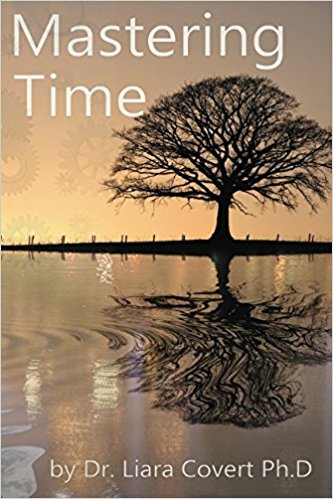For many, stress and trauma may seem a regular part of life. The question is, at what point do we stop allowing this to hijack our energy and focus? And how do we go about healing from emotional trauma and shift to living whole-heartedly? Consdier these 5 Tips:
1. Accept, Forgive and Be Willing to Heal
The first step to any healing or recovery is acceptance. Denial is a common coping mehanism of emotional trauma. Watch what happens as you choose to empower yourself by reframing the experience in love. Rather than allowing ego to echo that something is wrong with you, choose to see the expeirence in a cathartic way. Responses to experiences are simply pointers and do not define you. You are not your emotions, experiences, mindor body. You are the soul. You are not what you do or do not do, not your personality, not your behaviour. You are pure love. Love yourself enough to go through the healing process because you deserve the happiness. Trauma may be part of the journey to truth. It hasn’t taken anything away, you are a whole and complete.
2. Community & Support
Regaining your sense of safety is key to transmuting energy from emotional trauma and living wholeheartedly. This step may look different for everyone, depending on what makes you feel safe and what your idea of stability is. Creating community and a support system can include friends, family, professional help, even a pet. Being open to vunerability brings strength. Allow those closest to you to support you and be there for you while you heal. Take the time to ground connect with nature.
Nature has a very balanced and high frequency vibration that calms the mind and warm the heart. The purity, simplicity, and divinity of nature are very grounding and great for meditation and mind clearing. Society can be very overwhelming by presenting triggers and even just general stress into your life. It’s always helpful to step away from it and take some time to tap into the therapeutic properties of nature.
Even in urban living remember that you, yourself are nature. You can tap into the divine within you through meditation and you can experience the same soothing and grounding feeling. Allow yourself to reset with calm surroundings. See the beauty in the nature and people around you and begin to trust the universe again.
3. Let it go
The power of releasing feelings is oftenunderestimated! Healing from trauma doesn’t mean brushing it under the rug. To truly heal, it’s important to face it, and let yourself experience all of the emotions it brings up for you. Purge yourself of the negativity, and only leave what’s productive and positive. Cry out your sadness, scream out any shame, punch out your anger at a boxing class, and face and accept your fear.
Purify yourself by letting out all the emotional responses that you have pent up. Sometimes many of the long-term responses you have to trauma are actually a result of holding in your emotions more so than the trauma itself. Exercise and physical activities are an incredibly therapeutic way to heal from trauma for this very reason. They’re a great outlet for letting out emotions and channeling negative ones into something positive.
Now, the goal isn’t to relive the trauma, but it most certainly is also not to escape the uncomfortable emotions that it brings up. The goal is a healthy middle ground that allows you to heal and process the trauma. Aside from cleansing the pent up emotions the trauma has caused, it’s also important to grieve what you may have lost as a result of the trauma, whether it’s a certain quality of life, a person/being/pet in the case of death, even just peace of mind and sleep. Be patient with yourself.
4. Process and Empower
After you’ve allowed yourself to let out your pent up emotions surrounding the trauma, it’s time to look at the trauma itself from a balanced and logical place to pick it apart and strip it down to something you aren’t attached to anymore. For this tip it’s very important to have a therapist that you trust and feel comfortable with in order to help you analyze the trauma and the how’s, why’s, and what now’s of it.
A professional can help you put the trauma into context and process it in a healthy and constructive manner, allowing you to then empower yourself by detaching from it. The goal here is to see the trauma as something that doesn’t control you and your emotions anymore, to realize that you are bigger and stronger than the difficult experiences. To be able to confidently declare that your trauma is just something that happened to you, it is not a part of you and it does not define you.
Other activities that can help with this tip are meditation and reflection, as well as creative activities. These things help you step back and look at what happened and what it means for you, and even how to move forward from it. Creative outlets and activities are also good for Tip 3.
This step is all about taking the power back from your trauma by moving on from it, and realizing that your trauma is something outside and separate from you, a moment in time, it’s not part of you or who you are. You can leave your trauma in the past and move on to brighter days because it’s not attached to you anymore!
5. Reconnect, Balance, and Live Wholeheartedly
This last tip is all about how to maintain a healthy and wholehearted lifestyle after the bulk of the trauma healing process is done. While it’s important to do this throughout the process, an important factor in moving on and not being pulled back into the darkness of past trauma is having a stable, balanced, and structured lifestyle that includes healthy habits, a healthy support system and social life, and a healthy work-life balance.
When all the major areas of your life are doing well and in check, you enjoy a sense of stability and safety that make it easier to deal with things like triggers. Trauma often causes intense feelings of danger and instability, which is why a balanced and stable lifestyle and environment is so important when it comes to trauma healing. When you lead a healthy lifestyle — eating well, exercising, taking care of your body — your mind is clear and your emotions are more stable to handle reminders of past trauma and future trauma, even.
When you have a strong foundation, it’s hard for the storms in life to knock you down. When you’re living a physically and psychologically unhealthy life, you’re living life on the edge, and any little thing can push you over into chaos and spiral into depression. When you’re living a balanced and healthy life where your mind, body, emotions, finances, and relationships are all stable, you can handle and weather just about any storm.
Staying in touch with nature and maintaining a meditation practice are great ways to keep your mind and emotions healthy, while exercising and eating well are great for the body. Meditation helps quiet down your thoughts and calm the chatter of your mind, so that you can connect with your true self and experience wisdom, acceptance, and appreciation for life.
Emotional trauma gets stored in your body, and the body also benefits from meditation practice and the calm feeling of being in a thoughtless, meditative state. Exercising and activities such as yoga not only release endorphins, which make you feel safe and stable, but yoga aids in releasing the trauma stored in your body.
It’s also always important to continue therapy sessions and to maintain your strong support system to talk to whenever you are struggling with trauma or anything else. Shifting from self-isolation to connection is key as relationships are one of the most important pillars of happiness and balanced living.
 Monday, May 8, 2023 at 9:30AM
Monday, May 8, 2023 at 9:30AM  Email Article
Email Article  Print Article in
Print Article in  Consciousness tagged
Consciousness tagged  Hermetic,
Hermetic,  Ho'oponopono,
Ho'oponopono,  fulfillment,
fulfillment,  gender,
gender,  health,
health,  life,
life,  love,
love,  self-mastery,
self-mastery,  success,
success,  universal laws,
universal laws,  vibration,
vibration,  yoga
yoga 









